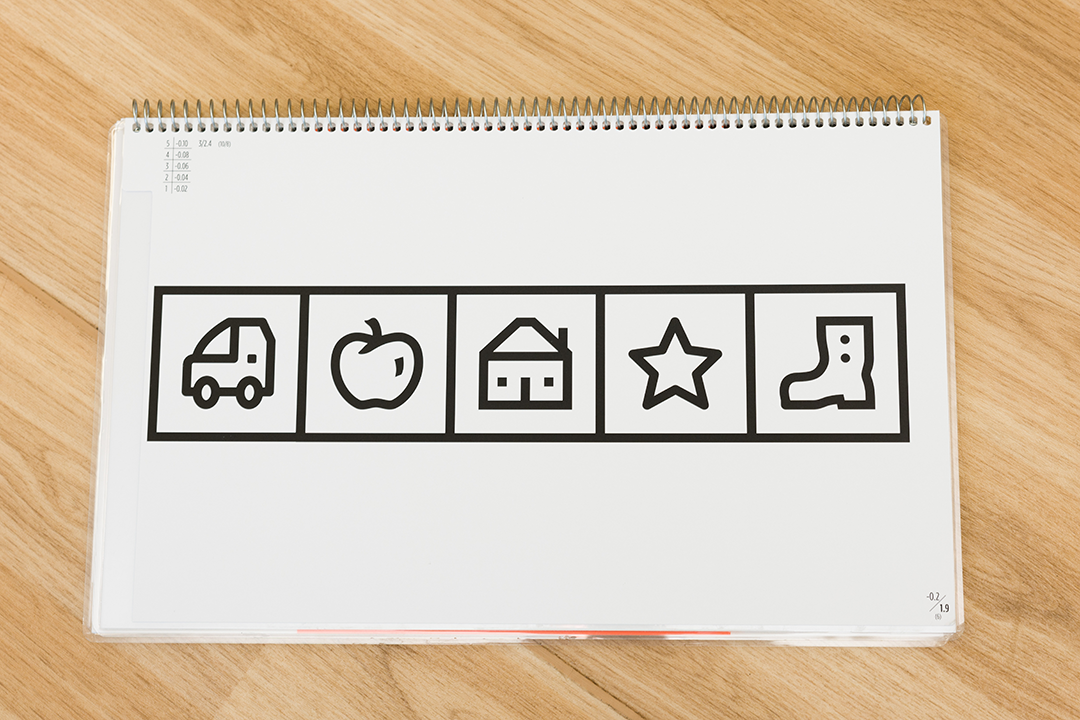Eye care for children with Down's syndrome

It's important for your child to have their eyes regularly examined throughout their life. It's especially important in their early years. There are certain eye conditions that are more common in children with Down's syndrome.
Explore the topics in this page:
Eye tests
We strongly recommend that your child or young person has regular eye tests. This is very important in their early years. It will help us to spot any issues or concerns early.
After birth, all babies will have an eye test to assess for cataracts. This is completely painless for your baby. The clinician will look at the general appearance of your baby's eyes and how they move.
During one of their visits, a health visitor will ask if you have any questions about your child's eyes. If you have any questions or concerns, let them know.

Common eye concerns for children with Down's syndrome
Children with Down's syndrome are more likely to develop some eye issues. This does not mean because your child has Down's syndrome they will have these issues.
Who can help
If you think your child or young person has a squint or any of these concerns, speak to your health visitor, GP or paediatrician.
They can refer your child to the eye clinic. We will be able to find out if there is a problem and arrange treatment, if needed.
Attending the eye clinic
If your child needs to visit the eye clinic, they will be seen by the orthoptist. An orthoptist is trained in assessing people's vision with a range of abilities, they spot and treat squints. They also assess the eye movements for eye movement weakness or disorders.
What will happen at the eye clinic
There are many different tests for children and young people. They are chosen to suit your child or young person's level of development.
We use a series of cards which are made specifically for babies. The cards have a plain grey area, a striped pattern or an outline of a picture. These cards will start with big thick lines. As the test goes on, the patterns will have thinner lines or and the pictures will be fainter.
The orthoptist will carefully watch where your baby chooses to look. Your baby will be shown the cards until they stop looking or responding. Their responses will be noted and compared what is expected for babies at a similar age.
Other tests use pictures known as Kay pictures for children. These are simple outline pictures of everyday things like a house, an apple and a duck. These pictures are held at a measured distance away from your child. Your child will then name, sign or match the pictures on a card.
After the assessment, the orthoptist will arrange for your child to be seen by an ophthalmologist. This is to treat anything found by the orthoptist or to see if your child needs glasses.

Eye test
The optometrist or ophthalmologist will carefully examine your child's eyes. This is to check that they are healthy and find out if your child needs glasses.
The optometrist or ophthalmologist will need to look at the back of your child's eyes. To do this, they will put a few eye drops into your child's eyes. The eye drops can sting. They will make the pupils of the eyes bigger (dilate) and temporarily stop the eyes from focusing. This makes it possible for the back of the eye to be examined.
When the eye drops are in, the optometrist or ophthalmologist will hold a lens in front of your child's eye and wave a beam of light across your child's eyes. They will use a torch called a retinoscope. The strength of the lens used to neutralise the light will show if your child is long-sighted or short-sighted.
Once the test is finished, the optometrist or ophthalmologist and orthoptist will let you know if your child has any eye problems. They will recommend further checks if it's appropriate.
You may be advised to take your child to an optometrist when they are a little older.
Last reviewed: 1 November, 2024

